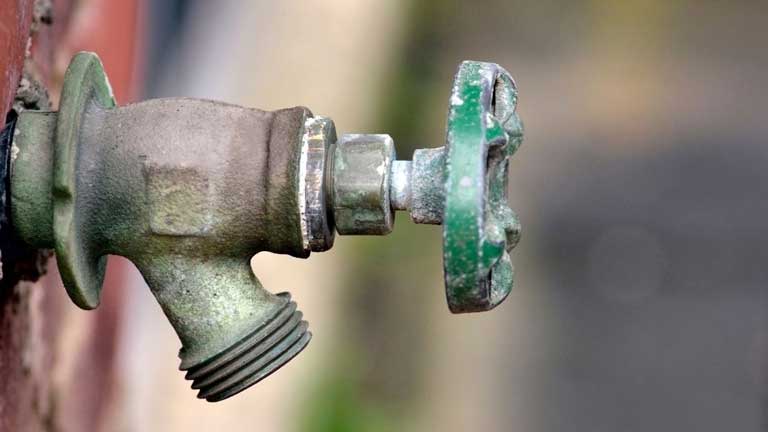Choosing the best outdoor faucet that lasts longer is quite tough and requires detailed scrutiny about its usage and properties.
Moreover, you might be confused in differentiating between the three faucets commonly used by people for outdoor purposes.
Therefore, in this article, we’ll guide you through the differences between spigots, hose bib, and sillcocks.
However, before getting into the differences, remember that the three terms are used interchangeably by many people, but there is a fine line between them. We’ll have you informed in a minute so keep on reading!

Hose Bib vs. Spigot vs. Sillcocks Differences
We have differentiated these based on different factors so that you can compare them head to head-
Structure
Hose bibs and Sillcocks are almost similar in structure with the integration of a spout and handle. However, to find the exact difference between a hose bib and sillcock, the spout on the hose bib offers a 60° angle which can attach your garden hoses easily at this angle. On the other hand, sillcock’s spout is 45°.
Moreover, the main structural difference between hose bibs and sillcocks is the position of the valve. The shut-off valve in the standard hose bib is close to the outdoor wall. In contrast, the sillcocks shut-off valve is inside the pipe.
In a hose bib, the hose area is threaded through by rubber to allow easy attachment to your pipes. Contrarily, the spigot has a single knob faucet that can hold one pipe. And unlike hose bibs and sillcocks, you can use spigots in the basement, crawl space, and even inside your house.
Read: Best Washing Machine Hammer Arrestor
Frost-free faucets
Standard sillcocks and hose bibs are outdated as they are not freeze-resistant. Consequently, when you turn off the standard faucets’ valve, the water tends to remain in the lower part of the sillcock, resulting in freezing of water, which can cause damage to the pipes.
Nowadays, people prefer using freeze-resistant hose bib and sillcock. The shut-off valve is placed inside the hose, covered from all the sides in the freeze-resistant hose bib. In contrast, in frost-resistant sillcocks, the valve is positioned inside the stem to keep the water warm.
However, water is far away from the outside wall in both the valves to make them freeze-resistant. On the contrary, there is no frost-free spigot available as its valve is positioned outside.
Read: Best PEX Crimp Tools For Tight Spaces
Maintenance
It is important to have proper maintenance of faucets so that you can prevent extensive damage to your home. And if you live in cold areas, you should be aware of exploding pipes and leaking taps.
Among the three faucets, standard hose bibs need the most care as they might get frozen when the winter arrives. To maintain a traditional hose bib is not a tough job. The easiest way to prevent freezing is to drain the lines before winter. Moreover, experts suggest standard hose bibs for mildly warm climates.
Additionally, if we talk about sillcocks, you need to check out for loosening knobs or nuts because the sillcocks leak out if it is not installed correctly.
Read: Best Backflow Preventer For Sprinkler System
Size
When selecting between the three faucets, it is crucial to know the average sizes between them. The most common size of hose bibs and spigots used is between ½ and ¼ inch. On the contrary, the sillcock size is a bit larger: 6 to 12 inches long.
On the other hand, the spigot’s hose diameter varies between 3/8 to ¾ inches. Remember that deciding the size and diameter of your faucet is essential. If you want a high-pressure flow of water, then a smaller sized faucet is better for you. Also, if your faucet’s diameter is more, then a larger volume of water will be delivered.
So, it is essential to know the average size differences between the most standard faucets.
Read: PEX vs PVC vs CPVC Comparison
Function
Moving to the three faucets’ function and working capacity, all are responsible for providing water to the outdoor environment. But the way they stop the water from flowing is where the difference lies.
Therefore, talking about sillcocks shows unique functionality. When we rotate the handle, the stem turns with it, and the valve located inside the closed pipe stops the water flow.
However, the standard hose bib has a basic structure and is the easiest to handle. Hose bibs do not have a check- valve and work like standard faucets do. On the other hand, spigots have compression valves that open when you rotate the knob. And after you close the knob, the compression stem tightens as the rubber seal prevents water flow.
Conclusion
Now that you end up here after reading the differences between the three faucets, you should already know the factors that make them different from each other.
However, before you decide on the best faucet for your residency, make sure to check the material, durability, and length of the outdoor faucet.
Whenever it comes to buying efficient faucets, many people get confused. But once you know the differences between the three, your task to select the best faucet becomes easier.
To conclude, we can say that frost-free sillcocks are the best faucet among the three because of their longevity and freeze-resistant properties. Should you have any other questions regarding the differences, feel free to use the comment form below.
Leave a Reply